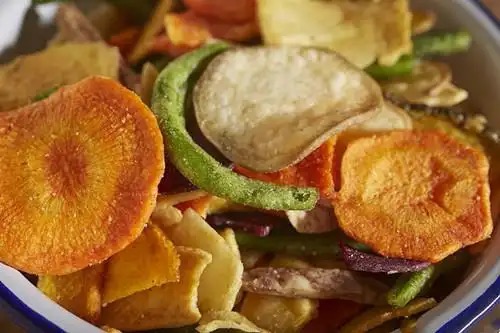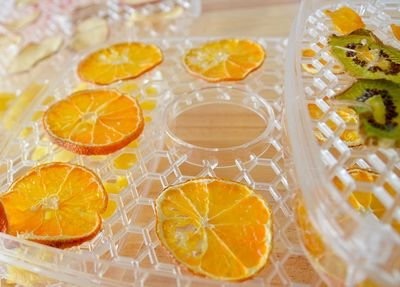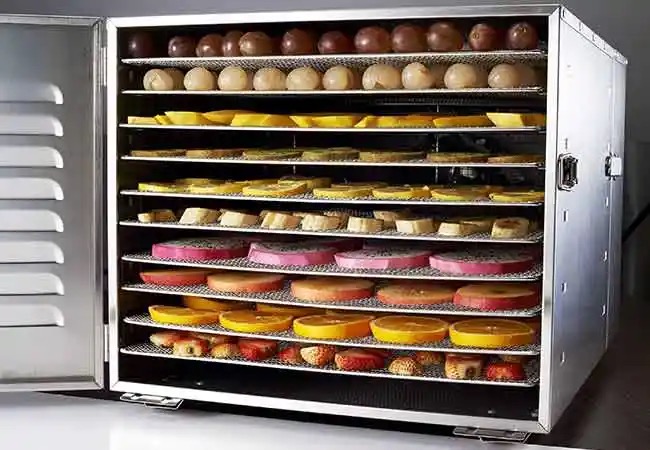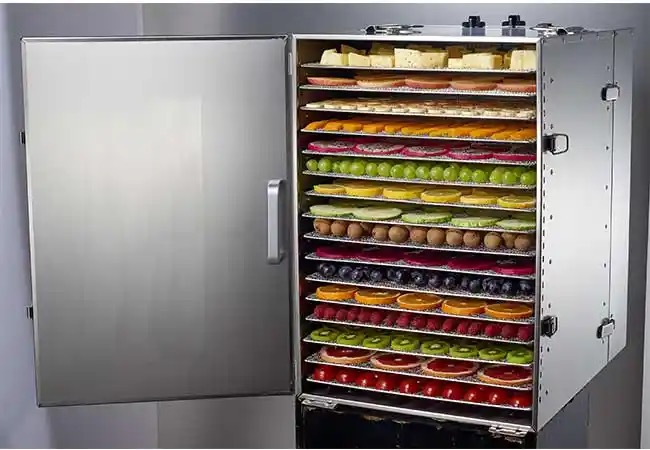
Content Menu
● Understanding Ventless Heat Pump Dryers
>> How Do Ventless Heat Pump Dryers Work?
● Benefits of Using Ventless Heat Pump Dryers for Food Drying
● Applications of Food Drying Machines
● Choosing the Right Food Drying Machine
● Maintenance Tips for Food Drying Machines
● Conclusion
● Frequently Asked Questions
>> 1. What types of food can be dried using ventless heat pump dryers?
>> 2. How do ventless heat pump dryers compare to traditional dryers?
>> 3. What maintenance is required for food drying machines?
>> 4. Are ventless heat pump dryers suitable for large-scale production?
>> 5. How can I ensure the quality of dried food products?
In the world of food preservation, drying is one of the oldest and most effective methods. As a leading manufacturer of food drying machines in China, we specialize in providing OEM services to international brands, wholesalers, and producers. This article will explore the efficiency of ventless heat pump dryers, particularly in the context of food drying, while also discussing the technology, benefits, and applications of food drying machines.

Understanding Ventless Heat Pump Dryers
Ventless heat pump dryers are a modern solution for drying clothes without the need for external venting. They work by using a heat pump to recycle air, making them energy-efficient and environmentally friendly. This technology is not only applicable to laundry but can also be adapted for food drying processes.
How Do Ventless Heat Pump Dryers Work?
Ventless heat pump dryers operate by extracting moisture from the air inside the drum. The process involves several key steps:
1. Air Circulation: The dryer pulls in warm air from the drum, which absorbs moisture from the food.
2. Heat Exchange: The warm, moist air is then passed through a heat exchanger, where it is cooled down. This cooling process condenses the moisture, which is collected and drained away.
3. Reheating: The now-dry air is reheated and circulated back into the drum, continuing the drying process.
This cycle allows for efficient moisture removal without the need for external venting, making it ideal for various applications, including food drying.
Benefits of Using Ventless Heat Pump Dryers for Food Drying
1. Energy Efficiency: One of the most significant advantages of ventless heat pump dryers is their energy efficiency. They consume less energy compared to traditional drying methods, which is crucial for food manufacturers looking to reduce operational costs. This efficiency is particularly important in an era where energy prices are rising and sustainability is a priority.
2. Consistent Drying: The controlled environment within the dryer ensures that food is dried evenly, preserving its quality and nutritional value. This consistency is vital for maintaining the integrity of the product. Uneven drying can lead to spoilage or loss of flavor, which can be detrimental to food businesses.
3. Space-Saving Design: Ventless dryers do not require external venting, allowing for more flexible installation options. This is particularly beneficial for food processing facilities with limited space. Manufacturers can optimize their production layout without worrying about venting requirements.
4. Reduced Environmental Impact: By using less energy and eliminating the need for venting, these dryers contribute to a lower carbon footprint, aligning with the growing demand for sustainable practices in food production. This aspect is increasingly important to consumers who prefer eco-friendly products.
5. Versatility: Ventless heat pump dryers can be used for various food products, including fruits, vegetables, herbs, and meats. This versatility makes them an excellent investment for food manufacturers. The ability to dry different types of food in the same machine can streamline operations and reduce costs.

Applications of Food Drying Machines
Food drying machines are essential in various industries, including:
1. Snack Production: Dried fruits and vegetables are popular snacks. Using heat pump dryers ensures that these products retain their flavor and nutrients. The snack industry has seen a significant rise in demand for healthy, dried snacks, making efficient drying methods crucial.
2. Herb Drying: Herbs require careful drying to maintain their aroma and potency. Ventless dryers provide the ideal conditions for this process. The preservation of essential oils in herbs is critical for culinary and medicinal uses.
3. Meat Preservation: Dried meats, such as jerky, are a staple in many cultures. The consistent drying process helps prevent spoilage and extends shelf life. This is particularly important for producers who want to ensure their products remain safe and tasty for consumers.
4. Dehydrated Meals: With the rise of convenience foods, dehydrated meals are becoming increasingly popular. Ventless heat pump dryers can efficiently dry ingredients for these meals, ensuring they rehydrate well and maintain their flavor.
5. Food Storage: Dried foods have a longer shelf life, making them ideal for storage. Manufacturers can produce dried goods that can be stored for extended periods without refrigeration, catering to both local and international markets.
Choosing the Right Food Drying Machine
When selecting a food drying machine, consider the following factors:
1. Capacity: Determine the volume of food you need to dry regularly. Machines come in various sizes, so choose one that fits your production needs. Larger operations may require industrial-sized machines, while smaller businesses can opt for compact models.
2. Energy Consumption: Look for models with high energy efficiency ratings to minimize operational costs. Energy-efficient machines not only save money but also contribute to a more sustainable operation.
3. Temperature Control: Precise temperature control is essential for different food types. Ensure the machine can maintain the required temperatures for optimal drying. Some foods require specific drying temperatures to preserve their quality.
4. Ease of Use: User-friendly controls and maintenance features can save time and reduce labor costs. Machines that are easy to operate can help streamline production processes.
5. Durability: Invest in machines made from high-quality materials to ensure longevity and reliability in your production line. Durable machines can withstand the rigors of daily use and reduce the need for frequent repairs.
Maintenance Tips for Food Drying Machines
To ensure the longevity and efficiency of your food drying machine, follow these maintenance tips:
1. Regular Cleaning: Keep the machine clean to prevent buildup of food particles and moisture, which can affect performance. Regular cleaning helps maintain hygiene standards, especially in food production.
2. Check Seals and Gaskets: Inspect seals and gaskets regularly to ensure they are intact and functioning properly. Damaged seals can lead to energy loss and inefficient drying.
3. Monitor Performance: Keep an eye on the drying times and temperatures to identify any potential issues early. Regular monitoring can help catch problems before they escalate.
4. Professional Servicing: Schedule regular maintenance checks with a professional to keep the machine in optimal condition. Professional servicing can help identify and fix issues that may not be apparent during regular use.
5. User Training: Ensure that all operators are trained on the proper use and maintenance of the machine. Proper training can prevent misuse and extend the life of the equipment.
Conclusion
Ventless heat pump dryers represent a significant advancement in food drying technology. Their energy efficiency, consistent drying capabilities, and versatility make them an excellent choice for food manufacturers. As a leading OEM provider of food drying machines, we are committed to helping businesses optimize their drying processes while minimizing their environmental impact.

Frequently Asked Questions
1. What types of food can be dried using ventless heat pump dryers?
Ventless heat pump dryers can be used for a variety of foods, including fruits, vegetables, herbs, and meats. Their versatility allows manufacturers to dry multiple products in one machine.
2. How do ventless heat pump dryers compare to traditional dryers?
Ventless heat pump dryers are more energy-efficient and do not require external venting, making them suitable for various applications. They also provide more consistent drying results.
3. What maintenance is required for food drying machines?
Regular cleaning, checking seals, monitoring performance, and professional servicing are essential for maintaining food drying machines. Proper maintenance ensures optimal performance and longevity.
4. Are ventless heat pump dryers suitable for large-scale production?
Yes, they come in various capacities, making them suitable for both small and large-scale food production. Manufacturers can choose machines that fit their specific production needs.
5. How can I ensure the quality of dried food products?
Use machines with precise temperature control and monitor drying times to maintain the quality and nutritional value of the food. Consistent monitoring helps prevent over-drying or under-drying.












